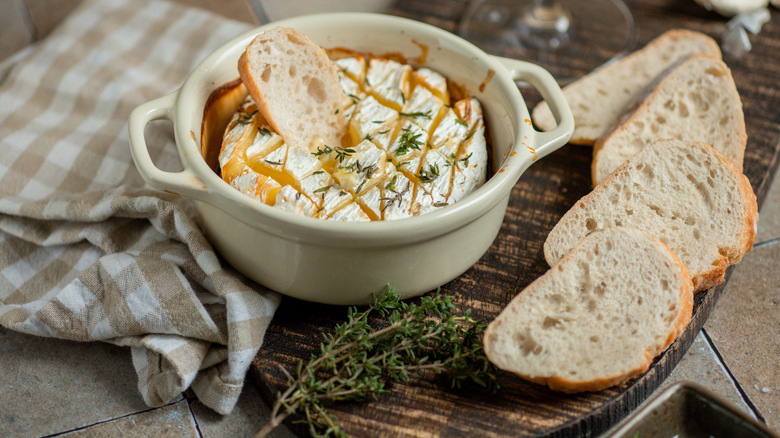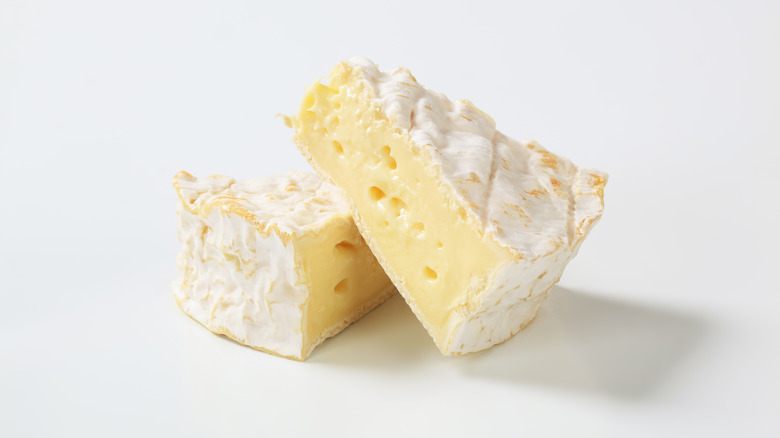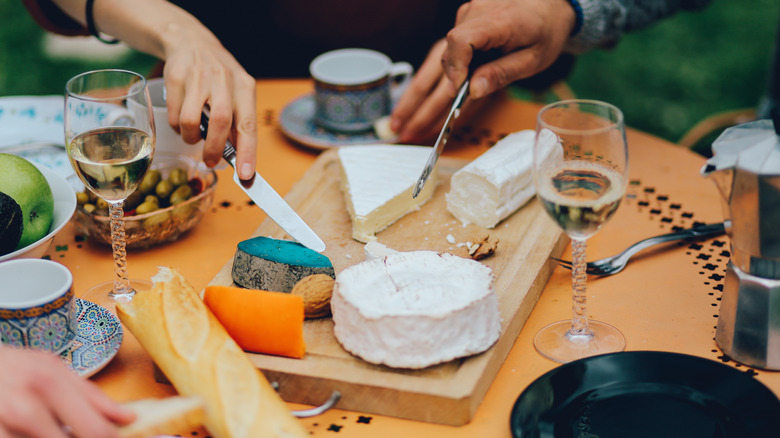Why You'll Never Eat 'Real' Brie Cheese In The US
Brie is quite possibly the most popular French cheese available in the United States. It's light and creamy and, when baked in the oven, makes an excellent gooey centerpiece for any cheese board. However, the version that is known in America is quite different from the original named after the Brie region in the north of France.
The reason: True French brie is made with raw cow's milk and has been made that way for centuries. This fact makes it nearly impossible to bring the traditional stuff into the United States, thanks to the complex rules and regulations surrounding raw milk food products. The FDA requires any cheese made with raw milk, either abroad or domestically, to have an aging time of 60 days or more. For example, Parmesan Reggiano is made with raw milk but it generally ages for at least two years before consumption.
Brie is a "young" cheese, meaning it's aged for approximately 40-45 days. This doesn't pass the test for American importation, so those creamy wheels have to stay in France. If you find brie at a grocery store that advertises itself as being from France, one of three things is true: It was aged longer than 60 days, it was made with pasteurized milk and imported here legally, or it is a lie.
Brie isn't the only cheese to suffer this fate; other famous French cheeses like camembert, reblochon, and roquefort are made with raw milk and their traditional counterparts aren't found in the US, either.
Raw milk brie tastes very different for this reason
Nearly all commercially available milk — and cheese — in the United States goes through two different processes: homogenization and pasteurization. Homogenization is a mechanical process that breaks down milk fats so that they don't accumulate as a cream at the top of the milk bottle. Pasteurization — discovered by Frenchman Louis Pasteur — is a process that heats milk to a certain temperature, killing bacteria that can be harmful and making the dairy products safer to consume.
Raw milk typically goes through neither of these processes. This fact does create a difference in flavor. In the case of raw milk brie cheese, it tends to have a much more intense flavor than its pasteurized counterpart, often retaining notes of the types of food on which cows graze. As a result, there can be a wide range of taste profiles in different kinds of brie.
There are a lot of myths and facts about raw milk's health benefits such as it has more nutrients, it may help with lactose intolerance as well as allergies and asthma, and that it's healthier for children. However, all of these claims have been refuted by scientific research. The Food and Drug Administration provides a thorough rebuttal to these myths, ultimately concluding that pasteurization helps rid bacteria without impacting nutrition. Additionally, the Center for Disease Control has done several studies about illnesses attributed to the consumption of raw milk, proving that they still pose a risk to human health.
You can still eat 'fake' brie just like the French do
While experiencing the taste of 'real' brie might not be possible outside of booking a flight to Paris, it's still possible to replicate the French experience at home by following some of the country's customs and traditions. A formal French dinner can have multiple courses, which may include aperitifs, hors d'oeuvres, fish, a main course, salad, cheese, and dessert. Brie easily slots into the cheese portion of the evening, but it can also be used as a salad garnish or in the construction of an hors d'oeuvre canapé.
All bries, whether 'real' or 'fake,' must be eaten when ripe, indicated by a firm exterior and a bouncy interior. If eaten too soon, the rind will be far too stiff, while an overripe brie loses its shape and becomes runny. The French commonly serve cheese at room temperature, eschewing the use of an oven to soften it, and when served as the cheese course, it is accompanied by crackers, a hard bread, or fruit like apples, pears, grapes, or dried apricots.
Finally, no French dining experience is complete without wine. The same acidity that comes from grapes or apples can be replicated in a Chardonnay; the combination of the creamy brie and acidic wine complements each other perfectly.



